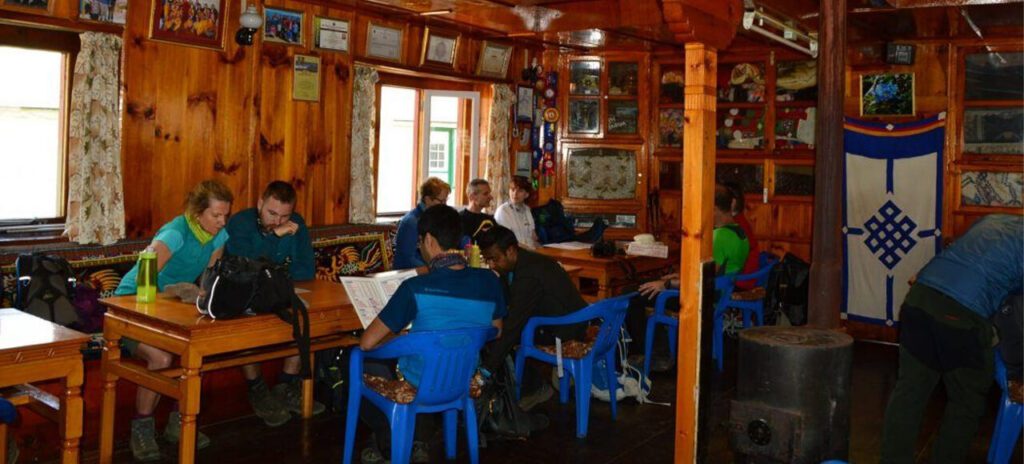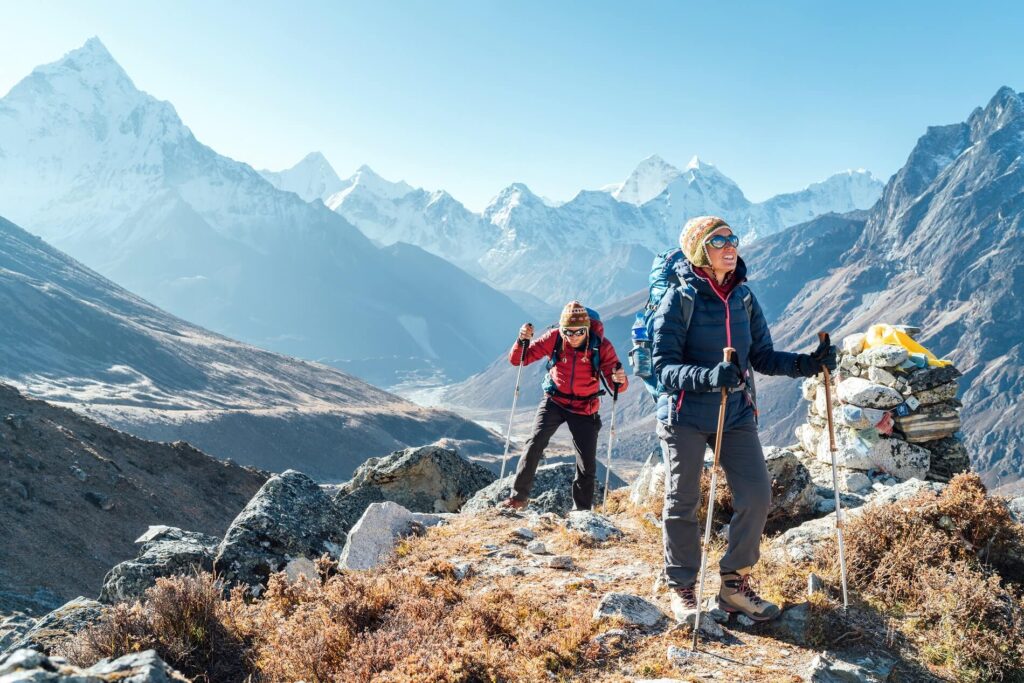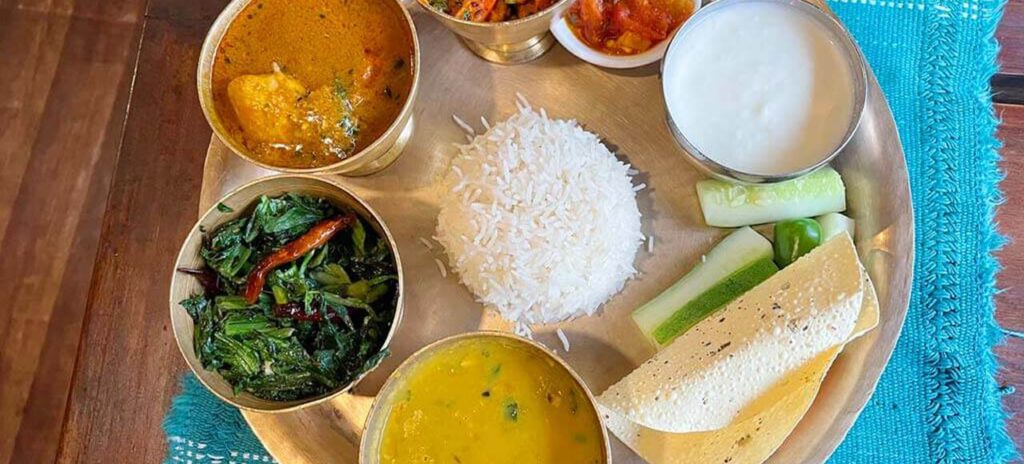One of the most well-known and difficult treks in the world, the Everest Base Camp trek draws thousands of adventurers each year. The journey, which starts in Nepal’s Khumbu region, takes you through some of the most breathtaking Himalayan scenery, including high-altitude passes, glaciers, and quaint Sherpa towns. Finding proper food and accommodation is an essential part of your trip because the trek includes several days of hiking in challenging conditions. In this context, it is essential to have a basic understanding of what to expect in terms of food and accommodation on the Everest Base Camp trek.
In this article, we will provide you with an overview of the food and accommodation options available on the trek, and what you can do to prepare yourself for this epic adventure.
Tea houses
The Everest Base Camp Trek is a once-in-a-lifetime adventure that attracts thousands of trekkers every year. One of the unique aspects of this trek is the availability of tea houses, which provide accommodation and hospitality to trekkers along the route. Tea houses are basic lodges that offer a comfortable bed, warm meals, and a chance to interact with locals and fellow trekkers. First of we will guide you through the tea houses on the Everest Base Camp Trek, including their facilities, costs, and tips for a memorable stay.

What are tea houses?
Tea houses, also known as guesthouses or lodges, are basic accommodations that are found throughout the Everest Base Camp Trek route. They provide a convenient and affordable way for trekkers to rest and recharge after a day of hiking. Tea houses are run by locals, which gives you a glimpse into the traditional mountain lifestyle.
Also Read: An Overview of Everest Base Camp
Types of tea houses
Tea houses vary in size, quality, and facilities. Some tea houses have private rooms, while others have shared dormitories. Most tea houses have a common dining area, where you can enjoy local, or sometimes even western, meals and socialize with other travelers. Some tea houses offer Wi-Fi, hot showers, and charging facilities, while others have more basic facilities.

Cost of tea houses
The cost of tea houses varies depending on the location and the facilities. In general, tea houses at lower altitudes are cheaper than those at higher altitudes. The cost of a bed ranges from $2 to $10 per night. Meals are usually priced separately and cost around $3 to $7 per meal. In some tea houses, they also charge an extra amount for a hot shower.
Hospitality at tea houses
Tea houses are known for their warm hospitality and friendly staff. The owners and staff are usually locals who are eager to share their culture and traditions with visitors. They are also knowledgeable about the trekking route and can provide valuable advice and tips to trekkers. The food at tea houses is usually simple and hearty, with a focus on local cuisine.
Tips for a memorable tea house experience
- Book your tea house in advance, especially during the peak trekking season.
- Bring your own sleeping bag and toilet paper.
- Be respectful of the local culture and customs.
- Drink plenty of fluids and stay hydrated.
- Carry cash, as most tea houses do not accept credit cards.
Prices/Costs of food during the trek
The Everest Base Camp Trek is a bucket list item for many adventure seekers around the world. While the trek itself is challenging and rewarding, one important consideration for trekkers is the cost of food. We will explore the typical prices for meals and snacks on the Everest Base Camp Trek.
The cost of food on the Everest Base Camp Trek can vary depending on the location and the type of food. Here are some typical prices you can expect to pay:
Tea Houses
Tea houses are the main accommodation option on the Everest Base Camp Trek, These local lodges also serve as the primary source of food for trekkers. The cost of food at tea houses can range from $3 to $7 per meal, depending on the type of food and the location. For example, a plate of fried rice or noodles typically costs around $5, while a bowl of soup may cost $3 to $4. Keep in mind that prices may be higher at higher altitudes, as food needs to be transported from lower elevations.
Snacks
Snacks are important for energy and sustenance during the trek. You can expect to pay prices around $2 to $3 for a chocolate bar or a bag of chips, and around $1 to $2 for a piece of fruit or a small pack of biscuits.
You may also like: Everest Base Camp Route – From Tenzing Hillary route to Heli ride
Water
Staying hydrated is crucial on the Everest Base Camp Trek, and water is the most important element of hydration. You can purchase bottled water at tea houses for the price of around $1 to $3 per bottle, depending on the altitude and availability. Alternatively, you can also bring a water purification device to purify water from natural sources, which can save you money in the long run.
The prices of food and drinks during treks are higher than in other areas of Nepal. This is because, many of the popular trekking destinations in Nepal, such as the Everest Base Camp Trek, are located in remote areas that are difficult to access. This means that supplies, including food and fuel, need to be transported long distances, which drives up the costs. Also, due to the rugged terrain and remote locations, the infrastructure in many trekking areas in Nepal is limited. Accommodation options, such as tea houses, can be basic and may not have all the amenities that travelers are accustomed to. This can result in higher prices for basic necessities.

Restaurants, lodges, hotels, camping
Trekking to the Everest Base Camp is an adventure of a lifetime. The journey to the highest peak on Earth is filled with stunning landscapes, challenging trails, and unique experiences. One of the most important aspects of this trek is food and accommodation. Let’s explore the different options available for food and accommodation on the Everest Base Camp trek, including restaurants, lodges, hotels, and camping.
Restaurants
You can discover a number of restaurants as you make your journey up to the Everest Base Camp. These eateries provide a range of dining choices, from western-style foods to Nepalese cuisine. The majority of eateries have both vegetarian and non-vegetarian alternatives, and the cuisine is freshly made. It’s good to keep in mind that food costs increase with elevation. But, you can anticipate a variety of food choices that will satiate your palate and provide you the energy you need for the journey ahead.
Lodges and Hotels
Lodges and hotels are excellent options for those who prefer more comfort and privacy during their trek. These accommodations are located in small villages and offer basic amenities such as comfortable beds, hot showers, and electricity. Most of the lodges and hotels have a restaurant attached, serving local and western-style dishes. You will find lodges and hotels at every stop on the trek, and you can choose to stay in a different one every night or stick to one place for the duration of your trek.
Camping
For those who prefer a more adventurous experience, camping is a great option. Camping allows you to connect with nature and experience the stunning Himalayan views. There are designated camping sites on the Everest Base Camp trek that offer basic facilities such as a tent, sleeping bag, and meals. It is important to keep in mind that camping requires more preparation and gear, so it is advisable to hire a trekking company that offers camping as an option.
You may also be interested in: EVEREST BASE CAMP CHALLENGES
Food menu during your Everest base camp trek
Trekking to the base of Mount Everest is a once-in-a-lifetime adventure. But with the high altitude and strenuous physical demands of the trek, it’s important to fuel your body with the right foods to keep you going. Let’s explore the various food options available during the Everest Base Camp trek, so you can stay energized and focused on the journey ahead.
Section 1: Traditional Nepalese Food
Mostly you will find Nepalese food during your trek. Nepalese cuisine is rich in flavors and spices, making it an excellent option for fueling your Everest Base Camp trek. Some of the traditional Nepalese foods you can expect to find along the way include:
- Dal Bhat: a staple dish consisting of lentil soup(Dal), rice(Bhat), and vegetables(Tarkari). This dish is high in protein and carbohydrates, making it an excellent option for long hikes.
- Momos: a type of dumpling filled with vegetables, chicken, or buffalo meat. Momos are a popular snack in Nepal and are often served with a spicy dipping sauce.
- Thukpa: a hearty noodle soup filled with vegetables, meat, and spices. Thukpa is a great option for warming up on cold nights at higher altitudes.

Section 2: Western-Style Food
If you’re looking for more familiar options, many teahouses and lodges along the Everest Base Camp trek also offer western-style cuisine. Some of the options you may find include:
- Pasta dishes: spaghetti, macaroni and cheese, and other pasta dishes are a common option for hikers who want a familiar meal.
- Sandwiches: simple sandwiches with fillings like cheese, egg, or vegetables are an easy, portable option for a quick lunch on the trail.
- Omelets: many teahouses and lodges offer omelets made with eggs, vegetables, and cheese. These are great options for a hearty breakfast before a long day of hiking.
Section 3: Snacks and Beverages
In addition to full meals, there are also plenty of snack options available along the Everest Base Camp trek. Some of the snacks you can expect to find include:
- Trail mix: a mix of nuts, seeds, and dried fruits that provides a quick burst of energy.
- Chocolate: a sweet treat that can also provide a boost of energy when you need it.
- Energy bars: many teahouses and lodges offer energy bars and other packaged snacks that are designed to provide sustained energy.
Beverages are also important for staying hydrated and energized on the trek. Some of the beverages you can expect to find include:
- Tea: a popular beverage in Nepal, tea is a great option for warming up on cold nights.
- Coffee: many teahouses and lodges offer coffee, which can provide a quick energy boost in the morning.
- Water: it’s important to stay hydrated on the trek, and there are plenty of opportunities to refill your water bottle along the way.
Conclusion
In conclusion, the Everest Base Camp trek is an incredible adventure, but it’s important to fuel your body with the right foods to make the journey more enjoyable. Whether you prefer traditional Nepalese cuisine or more familiar western-style options, there are plenty of food options available along the way. With this food and accommodation guide, you’ll be well-equipped to make the most of your trekking experience.
Let our expert team at Asian Heritage Treks and Travel take care of everything — from guided tours to personalized packing tips and travel arrangements.
Plan My Everest Trip







